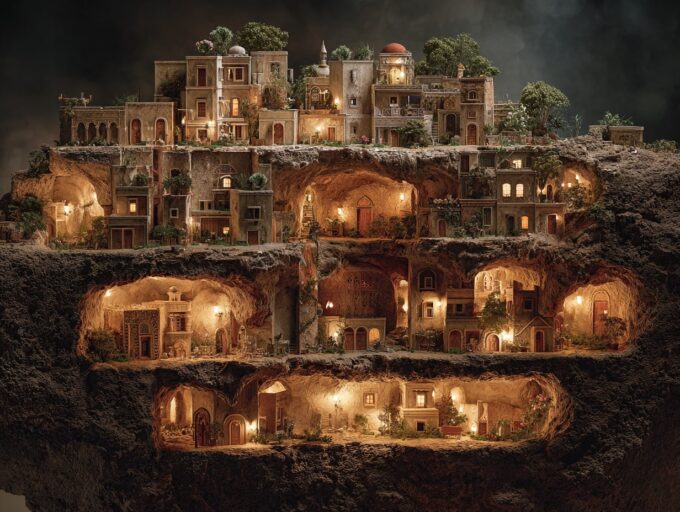- Home
- Articles
- Architectural Portfolio
- Architectral Presentation
- Inspirational Stories
- Architecture News
- Visualization
- BIM Industry
- Facade Design
- Parametric Design
- Career
- Landscape Architecture
- Construction
- Artificial Intelligence
- Sketching
- Design Softwares
- Diagrams
- Writing
- Architectural Tips
- Sustainability
- Courses
- Concept
- Technology
- History & Heritage
- Future of Architecture
- Guides & How-To
- Art & Culture
- Projects
- Interior Design
- Competitions
- Jobs
- Store
- Tools
- More
- Home
- Articles
- Architectural Portfolio
- Architectral Presentation
- Inspirational Stories
- Architecture News
- Visualization
- BIM Industry
- Facade Design
- Parametric Design
- Career
- Landscape Architecture
- Construction
- Artificial Intelligence
- Sketching
- Design Softwares
- Diagrams
- Writing
- Architectural Tips
- Sustainability
- Courses
- Concept
- Technology
- History & Heritage
- Future of Architecture
- Guides & How-To
- Art & Culture
- Projects
- Interior Design
- Competitions
- Jobs
- Store
- Tools
- More

Sustainability is more than just a buzzword today. It’s a movement that has gained traction worldwide, prompting a shift in our lifestyles. One significant change is in how we design and build our homes. As we stride deeper into the 21st century, the appeal for sustainable, eco-friendly materials in home construction and decor is more prevalent than ever. While cork, rammed earth, and reclaimed wood have been widely recognized for their environmental benefits, they only represent the tip of the iceberg in the vast ocean of sustainable material choices. In this article, we dive into other eco-friendly alternatives to consider for your home construction, renovation, or redecoration projects.
Bamboo
Bamboo is one of the fastest-growing plants globally, making it an incredible renewable resource. Its strength and durability are comparable to hardwood, making it a superb material for flooring, furniture, and even structural elements in home construction. Bamboo is also naturally resistant to pests and fungi, reducing the need for toxic chemical treatments. Bamboo is an incredibly sustainable material, and can be used in a wide range of decorative items, from picture frames to lampshades, and from bowls to decorative screens.

Recycled Metal
Using recycled metal reduces the need for new mineral mining and the energy consumption associated with the refining process. Recycled metal can be used in a plethora of applications, from roofing and structural supports to decorative elements like light fixtures and furniture.
Eco-friendly Wallpapers
Eco-friendly wallpapers are made from either recycled materials or sustainably sourced paper. Some are also printed with water-based, non-toxic inks. They come in a wide variety of designs, allowing you to enhance the aesthetic of your home while maintaining eco-consciousness.

Straw Bales
Used in the construction of straw bale homes, these provide excellent insulation for both hot and cold climates. When used in construction, straw bales can significantly reduce the amount of energy needed for heating and cooling, leading to a smaller carbon footprint.
Hempcrete
Hempcrete is made by mixing the woody inner fibers of the hemp plant with lime. The result is a lightweight, insulating, and breathable material that is ideal for walls, floors, and ceilings. Hemp grows quickly and absorbs large amounts of carbon dioxide as it grows, making hempcrete an excellent carbon-negative building material.
Sheep’s Wool
While typically thought of in the clothing industry, sheep’s wool also provides a natural, renewable source of insulation for homes. It’s safe to handle, helps regulate humidity, and even has the ability to absorb and neutralize harmful substances.
Plant-based Polyurethane Rigid Foam
This is a relatively new type of insulation material that’s made from kelp, hemp, and bamboo. It has high moisture and heat resistance, and its manufacturing process is more eco-friendly than that of traditional foam insulations.

Organic Cotton or Hemp Curtains
Curtains made from organic cotton or hemp not only look stylish but are also produced without harmful pesticides. Hemp is particularly sustainable as it requires less water to grow compared to conventional cotton.
Eco-friendly Fabrics for Upholstery
Choosing upholstery made from natural, organic materials such as organic cotton, hemp, or linen can make your furniture not only beautiful but also more sustainable.
Low VOC Paints
Volatile Organic Compounds (VOCs) are harmful chemicals released by various household products, including conventional paints. Opting for low VOC or zero VOC paints reduces these emissions, leading to improved indoor air quality.
By exploring these sustainable materials, homeowners can significantly decrease their ecological footprint while maintaining a comfortable, stylish living environment. This broad array of choices ensures that no matter your design preferences or practical needs, there are eco-friendly options available that are far beyond the conventional. Remember, every small step towards sustainability helps to protect our planet for future generations.

Submit your architectural projects
Follow these steps for submission your project. Submission FormLatest Posts
The 10 Most Iconic Buildings in the World and Their Stories
From ancient marvels like the Great Pyramid of Giza to modern icons...
How to Choose the Best Balloon Garland Kit for Your Event Theme
Balloon garlands are now a very popular decoration for today’s celebrations, including...
Dependable Service for Everyday Appliance Problems
When a washer stalls mid-cycle or a fridge warms up, you need...
8 Essential Web-Based Mapping Tools for Modeling Sea Level Rise and Flood Impacts
As climate change accelerates, flood risk and sea level rise have become...











Leave a comment